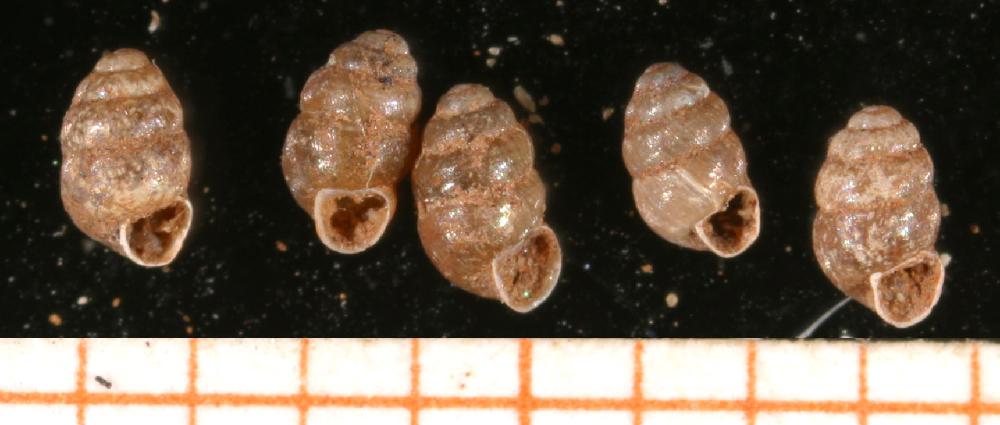
Interactions
There are many ways that Vertigo pygmaea interacts with the many organisms in its environment. In many ways it is both a predator and sometimes a prey, also it is dependent on certain organisms to live.
 As mentioned in the
Nutrition section, the Vertigo pygmaea
eats a wide variety of plants, algae and fungi and therefore is
considered a predator for these species. Along with predation
it can also become prey to many different species. There are a
lot of different types of birds and small mammals that like to eat
snails along with some insects, reptiles and nematodes.
As mentioned in the
Nutrition section, the Vertigo pygmaea
eats a wide variety of plants, algae and fungi and therefore is
considered a predator for these species. Along with predation
it can also become prey to many different species. There are a
lot of different types of birds and small mammals that like to eat
snails along with some insects, reptiles and nematodes.
A study done in western Europe showed that 44 percent of the shells in that area had large holes in it and 30 percent of the shells had been smashed which is suspected to be from large mammals. This shows that in this area the mammals are the main predators for land snails including Vertigo pygmaea. (Plotts, et al 1975)
Humans can effect the lives of snails in many ways. Being so small they are often trampled if they are in a vulnerable spot. In an experiment involving three zones of varying degrees of human trafficking the numbers of Vertigo Pygmaea were counted and the results showed that the zone with the most human influence showed drastically lower amounts of the species. (Chappell, et al 1971) Another way is that humans could also ruin the environment that they live in forcing them to move or possibly die. On the other hand the snails could also effect the lives of humans by eating their fruits or vegetables that they are trying to grow.
In the environment that snails live in, see Habitat section, there are many other species that live mutualistically.
Information on the interactions taken from (Slug and Snail Trail 2011)
For some more specific facts on the Vertigo pygmaea lets look at the Interesting Facts section.
Take me back Home!